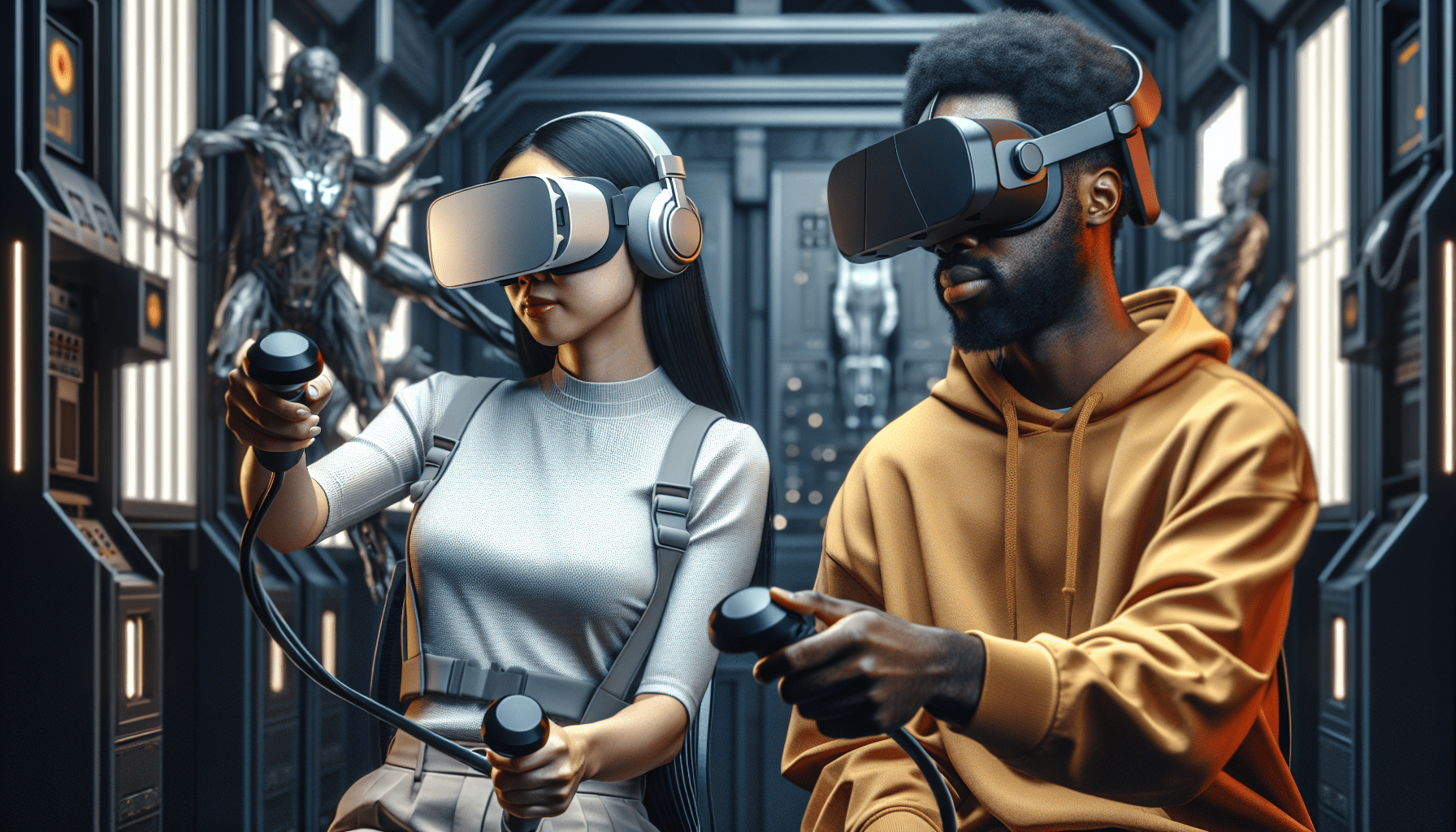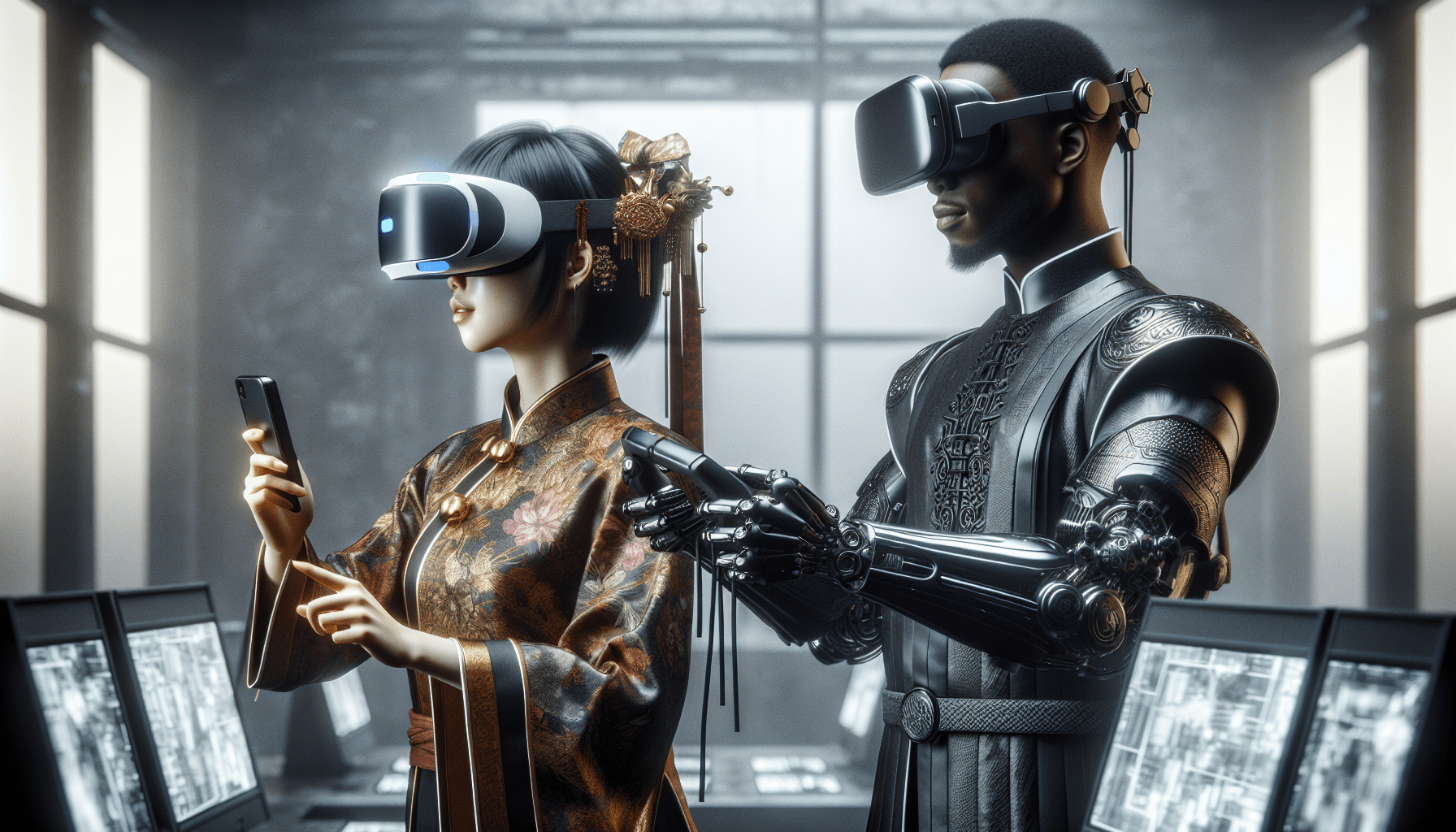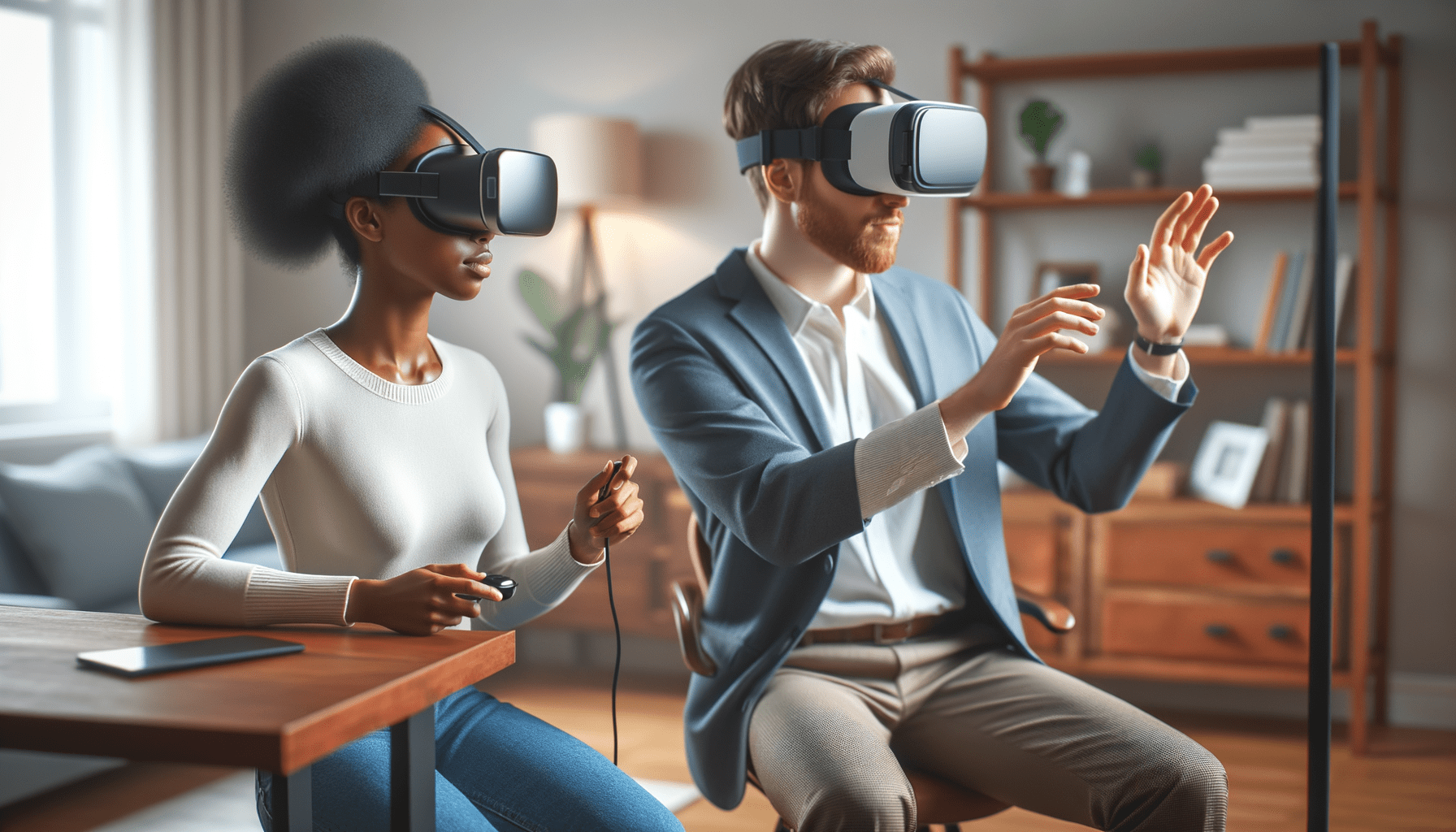Integrating multi-sensory feedback in VR can significantly enhance the immersive experience, making virtual environments more engaging and realistic.
This article explores the benefits and challenges of incorporating multi-sensory VR, providing insights for game designers, creative directors, and developers.
Overview of Multi-Sensory VR
Key Points
- Enhanced Immersion: Multi-sensory feedback increases the sense of presence in VR.
- Improved Performance: Users perform better in high-load tasks with multi-sensory cues.
- Reduced Workload: Multi-sensory integration can decrease cognitive load.
- Realistic Experiences: Combining visual, auditory, and tactile feedback mimics real-life conditions.
- Technological Challenges: Implementing multi-sensory feedback requires advanced hardware and software.
Definition and Importance
Multi-sensory VR involves the integration of various sensory inputs, such as visual, auditory, and tactile feedback, to create a more immersive virtual environment. This approach aims to replicate real-world experiences more accurately, enhancing user engagement and presence. By leveraging multiple senses, VR developers can create more compelling and realistic simulations, which are crucial for applications in gaming, training, and education.
Historical Context
The concept of multi-sensory VR has evolved significantly over the years. Early VR systems primarily focused on visual and auditory feedback. However, advancements in technology have enabled the incorporation of additional sensory inputs, such as haptic feedback and even olfactory cues. These developments have paved the way for more immersive and interactive VR experiences, pushing the boundaries of what is possible in virtual environments.
Current Applications
Today, multi-sensory VR is used in various fields, including gaming, medical training, and military simulations. For instance, in gaming, multi-sensory feedback can enhance the player’s experience by providing realistic sensations, such as vibrations during explosions or the feeling of wind while flying. In medical training, multi-sensory VR can simulate surgical procedures, allowing trainees to practice in a controlled and realistic environment. Similarly, military simulations use multi-sensory VR to create realistic training scenarios, improving soldiers’ preparedness and performance.
Challenges in the Video Game Development Industry

Creating Immersive Environments
One of the most significant challenges in video game development is creating truly immersive environments. While visual and auditory feedback are well-established, integrating tactile and other sensory inputs remains complex. Developers must balance the need for realism with the technical limitations of current hardware and software.
For example, implementing haptic feedback requires specialized equipment, such as vibration motors or wearable devices, which can be costly and difficult to integrate seamlessly into the gaming experience. Additionally, ensuring that these sensory inputs are synchronized with the virtual environment is crucial for maintaining immersion.
Innovative Gameplay
Another challenge is the need for innovative gameplay that leverages multi-sensory feedback effectively. Traditional game design principles may not fully utilize the potential of multi-sensory VR, requiring developers to rethink their approach. This involves designing gameplay mechanics that incorporate various sensory inputs in meaningful ways.
For instance, a game might use auditory cues to guide players’ attention or tactile feedback to simulate different textures and surfaces. Developing these mechanics requires a deep understanding of how different sensory inputs interact and influence player behavior.
Narrative Development
Struggling with narrative development is a common issue in the industry. Integrating multi-sensory feedback can add depth to storytelling, but it also introduces new complexities. Developers must consider how sensory inputs can enhance the narrative without overwhelming the player.
For example, using olfactory cues to evoke specific emotions or memories can be powerful, but it requires careful implementation to avoid being distracting or unpleasant. Balancing these elements is essential for creating a cohesive and engaging narrative experience.
Implementing Multi-Sensory Feedback in VR

Step 1: Designing Sensory Inputs
The first step in implementing multi-sensory feedback is designing the sensory inputs. This involves identifying which senses to engage and how they will be integrated into the VR experience. Developers should consider the specific goals of their project and how different sensory inputs can enhance the overall experience.
For example, in a horror game, developers might use auditory cues to create tension and tactile feedback to simulate the feeling of being touched by unseen entities. By carefully designing these sensory inputs, developers can create a more immersive and engaging experience for players.
Step 2: Integrating Hardware and Software
Once the sensory inputs are designed, the next step is integrating the necessary hardware and software. This involves selecting appropriate devices, such as haptic gloves or VR headsets with built-in audio, and ensuring they are compatible with the game engine and other software components.
Developers must also consider the technical challenges of synchronizing sensory inputs with the virtual environment. This requires precise timing and coordination to ensure that sensory feedback is delivered at the right moment, enhancing the player’s sense of presence and immersion.
Step 3: Testing and Iteration
The final step is testing and iteration. Developers should conduct extensive testing to ensure that the multi-sensory feedback is working as intended and providing the desired effects. This involves gathering feedback from players and making necessary adjustments to improve the experience.
Iteration is crucial for refining the sensory inputs and addressing any issues that arise during testing. By continuously improving the multi-sensory feedback, developers can create a more polished and immersive VR experience that meets the needs and expectations of players.
FAQs
What is multi-sensory VR?
Multi-sensory VR involves integrating various sensory inputs, such as visual, auditory, and tactile feedback, to create a more immersive and realistic virtual environment. This approach enhances user engagement and presence by replicating real-world experiences more accurately.
How does multi-sensory feedback improve VR experiences?
Multi-sensory feedback improves VR experiences by increasing the sense of presence and immersion. By engaging multiple senses, users feel more connected to the virtual environment, leading to better performance and a more enjoyable experience.
What are the challenges of implementing multi-sensory feedback in VR?
Challenges include the technical complexity of integrating various sensory inputs, the cost of specialized hardware, and the need for precise synchronization to maintain immersion. Developers must also design gameplay mechanics that effectively utilize multi-sensory feedback.
How can multi-sensory VR be used in gaming?
In gaming, multi-sensory VR can enhance the player’s experience by providing realistic sensations, such as vibrations during explosions or the feeling of wind while flying. It can also be used to guide players’ attention and simulate different textures and surfaces, adding depth to the gameplay.
Future of Multi-Sensory VR

The future of multi-sensory VR holds exciting possibilities, driven by advancements in technology and a growing understanding of how sensory inputs can enhance virtual experiences. Here are five predictions for the future of multi-sensory VR:
- Increased Accessibility: As technology advances, multi-sensory VR will become more accessible to a broader audience with affordable and user-friendly devices.
- Enhanced Realism: Future VR systems will offer even more realistic sensory feedback, including advanced haptic devices and olfactory inputs.
- Wider Applications: Multi-sensory VR will be used in various fields beyond gaming, such as education, healthcare, and training, providing immersive and effective learning experiences.
- Improved Integration: Seamless integration of multi-sensory feedback with existing VR platforms will become standard, enhancing the overall user experience.
- Personalized Experiences: Future VR systems will offer personalized multi-sensory experiences, adapting to individual preferences and needs for a more tailored and engaging experience.
More Information
- Multi-Sensory Virtual Reality – HITLabNZ – Information on projects and research related to multi-sensory VR.
- The impact of multisensory integration and perceptual load in virtual reality settings on performance, workload and presence | Scientific Reports – A detailed study on the effects of multi-sensory integration in VR.
Disclaimer
This is an AI-generated article with educative purposes and doesn’t intend to give advice or recommend its implementation. The goal is to inspire readers to research and delve deeper into the topics covered in the article.
- The Agentic Startup Manifesto - June 8, 2025
- Remote Hiring in 2025 - April 5, 2025
- Burnout in Remote Teams: How It’s Draining Your Profits - January 27, 2025
